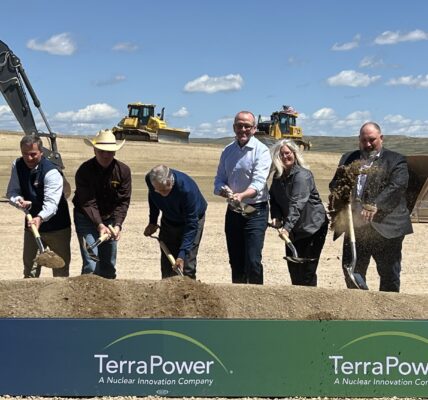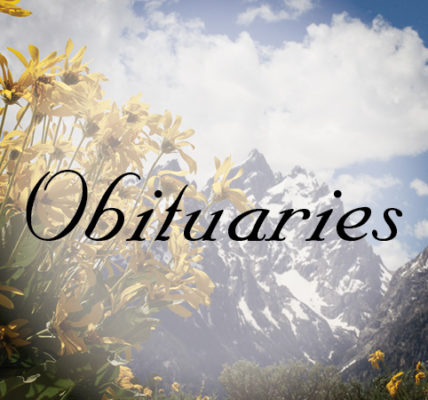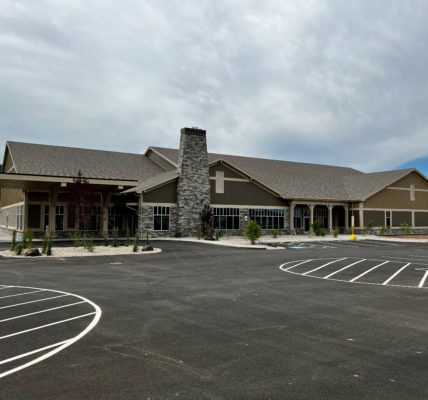
At Star Valley Health, CPR support goes by the name of LUCAS.
LUCAS is a portable device that’s placed on a patient’s chest, automating CPR with consistent compressions. The Star Valley Health Charitable Foundation has donated a LUCAS Chest Compression System to hospital’s emergency room to treat cardiac arrest patients. This new device is one of several LUCAS devices operated by SVH, not only at the hospital but circulating throughout the valley in Star Valley Health ambulances.
It’s estimated that there are more than 350,000 out-of-hospital cardiac arrests (OHCA) each year in the US. CPR is essential in these crises, helping to sustain the flow of oxygen-rich blood to the brain and other organs, and timely CPR can greatly increase a patient’s chance of survival.
“For someone coming back from a cardiac event, efficient and effective compression is one of the main drivers for a best outcome,” says Kyle Roniger, director of nursing at Star Valley Health. LUCAS offers many benefits for both patient and emergency team members, specifically in Wyoming’s remote communities and rugged terrain.
• Get to Know LUCAS
The development of LUCAS – or Lund University Cardiac Assist System – goes back to the 1990’s and a Norwegian paramedic named Willy Vistung. While on a call, Vistung found himself wondering how to improve CPR as he watched resuscitation underway for a patient being transported.
Vistung approached the Lund University Hospital in Sweden with an idea for an automated chest compressor. After years of design and extensive studies, LUCAS was onboarded to Swedish ambulances in 2003, and globally in 2009. LUCAS plays a key role in delivering life-sustaining care during emergencies. It maintains rhythmic compressions with consistent strength, which frees up hands to administer other critical tasks. The device’s radio translucent components allow for X-rays and CT scans to be
administered without breaking stride with compressions. The LUCAS device is designed to fit most adult anatomies.
Says Roniger, “Being able to put on a LUCAS compression device allows a nurse to help in other areas, like starting an IV or administering medications. The care that we can provide in the ER is much more seamless with LUCAS.”
• LUCAS Is Suited for Star Valley’s Remote Locale
And that support extends outside of the hospital as well. LUCAS provides consistent compressions in what can be very intense environments. Patients may need to be maneuvered through narrow doorways, down stairways, transported out of challenging terrain, or lifted onto helicopters. Maintaining CPR consistency can also be extremely difficult while in ambulances moving at high speeds.
“It’s very beneficial for out in the field,” says Roniger. “You can move the patient around while LUCAS is still performing CPR, so that CPR continues as long as it needs to.”
CPR provides emergency support in any instance of cardiac arrest, like heart attacks, strokes, or respiratory arrest. And receiving care while en route to the hospital can be lifesaving.
Roniger stresses the importance of calling 911: “We’ve set up EMS services throughout our valley where response times can be in the single digits. These rigs come equipped with lifesaving devices like the LUCAS. If you are having an emergency, call 911 and stay there so we can get to you. That’s the best way to bring care to you, rather than you trying to come to us.”
Star Valley Health’s new LUCAS device adds to SVH’s scope of innovative technology, delivering vital cardiopulmonary care in critical moments. Star Valley Health provides 24/7 emergency response throughout the valley.
The Star Valley Health Charitable Foundation – a 501(c)(3) organization – assists Star Valley Health in providing excellent healthcare services by leading fundraising for state-of-the-art technologies, training programs, and facility upgrades. To learn more, visit www.starvalleyhealth.org/foundation.





